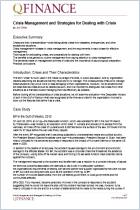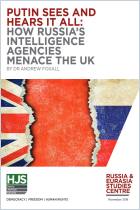Melden Sie sich bei getAbstract an, um die Zusammenfassung zu erhalten.

Melden Sie sich bei getAbstract an, um die Zusammenfassung zu erhalten.
Jon White
Dismiss, Distort, Distract, and Dismay
Continuity and Change in Russian Disinformation
IES, 2016
Was ist drin?
Russia’s modern disinformation campaigns echo Soviet-era propaganda efforts.
Recommendation
The West has been slow to recognize the formidable threat Russian disinformation campaigns pose to its democracies. According to Jon White from the NATO Special Operations School, Russia’s efforts to distract and spread confusion are modern adaptations of Soviet-era information warfare. White’s policy brief explains how Russia repurposed Soviet propaganda strategies to serve its present needs and how the European Union and NATO might counter this disinformation blitz. getAbstract recommends it to anyone worried about Russia's meddling in foreign elections.
Summary
About the Author
Jon White is a retired US army officer who teaches at the NATO Special Operations School in Belgium.





















Comment on this summary